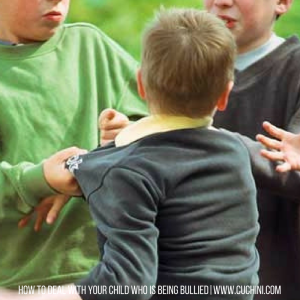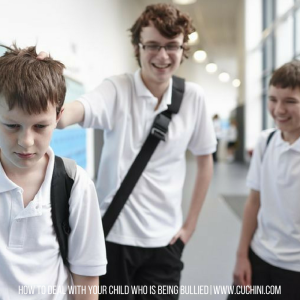 Bullies. Whether it was being shoved in your locker in the halls or getting a swirly in the bathroom during lunch, we’ve all had to deal with bullies at some point in our lives.Okay, maybe those types of shenanigans only happen in movies, but bullies are real and bullying is a serious problem for children at any age: especially for those in grade school.Getting bullied at such a young age can and will affect your child. Knowing how to cope together as a family is crucial, particularly in this growing stage of your child’s life. Knowing the strategies to deal with a grade school bully can make a world of a difference in your child’s life.
Bullies. Whether it was being shoved in your locker in the halls or getting a swirly in the bathroom during lunch, we’ve all had to deal with bullies at some point in our lives.Okay, maybe those types of shenanigans only happen in movies, but bullies are real and bullying is a serious problem for children at any age: especially for those in grade school.Getting bullied at such a young age can and will affect your child. Knowing how to cope together as a family is crucial, particularly in this growing stage of your child’s life. Knowing the strategies to deal with a grade school bully can make a world of a difference in your child’s life.
It doesn’t matter if the bullying is verbal, physical, or over the Internet, something has to be done so that your child doesn’t feel like he or she is all alone in the battle. Here are some must-know strategies on how you can help.
1. Stay connected
Bullies operate by making their victims feel alone and powerless. Children reclaim their power when they make and maintain connections with faithful friends and supportive adults.

2. Create awareness
Sometimes kids feel like adults never do anything–so why even bother to tell them about incidence of bullying? While there are cases when adults fail to acknowledge the seriousness of a situation, it is more often the case that grown-ups are not aware of what is going on. Bullies use relational aggression to inflict their violence in subtle, socially acceptable ways that tend not to register on an adult’s radar. Teach your child that it is her job to create awareness. Be clear in teaching kids that telling an adult about bullying is not a mark of cowardice, but rather a bold, powerful move.
3. Re-define tattling
Isolation is a bully’s method of intimidation. In fact, it is only by telling an adult that kids can begin to re-balance the power dynamic. When a bully realizes that he will not be able to keep a victim isolated, he immediately begins to lose power.
4. Act quickly
The longer a bully has power over a victim, the stronger the hold becomes. Oftentimes, bullying begins in a relatively mild form–name calling, teasing, or minor physical aggression. After the bully has tested the waters and confirmed that a victim is not going to tell and adult and stand up for his rights, the aggression worsens. Teach your child that taking action against the bully–and taking it sooner rather than later–is the best way to gain and retain power.

5. Respond assertively
The more a bully thinks he can pick on a victim without a response, the more he will do it. That’s why an assertive response is so effective in countering bullying. Kids who master the skills of assertiveness are comfortable in the middle ground between aggressive comebacks that up the ante for the next go-round, and passive responses that invite further abuse.
 Did you enjoy this article?
Did you enjoy this article?






